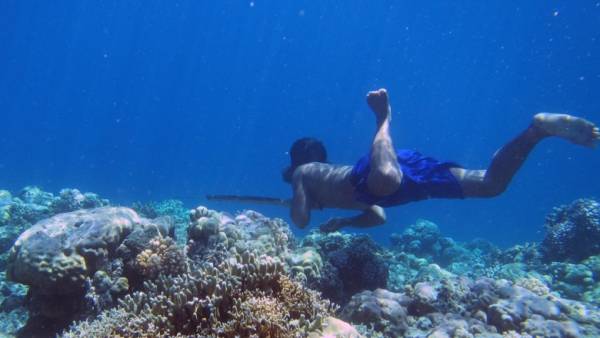Superpowers “sea nomads” explained by genetics
Scientists have found the genes that allow Asian people Bajo to hold his breath for an incredible five minutes and even longer.

When a person is immersed in water with head in the body for a few seconds, there is a change of coping with the lack of oxygen: the heart slows, the blood vessels in the periphery constrict to maintain blood flow to vital organs, the spleen releases strategic reserve of oxygen-rich red blood cells. It briefly prolongs the time we can spend under water, not choking.
This week, scientists from Denmark published an article in which describe the genetic adaptations discovered at one of the peoples of South-East Asia; these devices help the representatives of this nation to be under water longer than most people.
These people are called “sea nomads” (Sea Nomads). They practically live in the sea — the floating house boats, which are moored only occasionally on the shores of the Islands or on the mainland. They spend in the water is a huge part of life and is known as skilled divers. Representatives of the people of Baggio, for example, diving for edible shellfish, are able to hold their breath for five minutes or longer (for comparison, the average breath hold time the average person is 1-2 minutes, and divers Champions can do without air for three or almost four and a half minutes).
A few years ago, during the filming of BBC’s Human Planet, it was noted that the heart of the “sea nomads” under water slows down to 30 beats per minute; that’s 20 BPM less than the average adult.
Using only the belt-line and sinker and goggles for diving, they dive to a depth of 70 meters, said the crew. To a depth of, say, ten meters, they can dive all day.

Melissa lardo (Melissa Ilardo), an evolutionary biologist from the University of Copenhagen, was interested in why the “superpowers” people Baggio is in a constant practice that begins in early childhood, or in their genes. So she got the consent for genetic study of 43 representatives of Baggio, as well as 33 representatives of related to them, but land of the people of salua. Lardo and colleagues sequenced the DNA of study participants measured the volume of the spleen. The larger the body the more oxygen-rich red blood cells it can release into the blood during the dive.
It turned out that Bajo spleen half more than the people of shouta, Salwa. At the same time, those Bajo, which spetsializiruyutsya on diving, the spleen was only 10% increased spleen their fellow diving less or even moved on the land.
DNA Bajo, scientists have discovered 25 genomic variants that are unique to this people, and all of them were linked to the breath and the circulation of oxygen.
One option PDE10A gene that regulates production of thyroid hormones and the size of the spleen, we found a half of Baggio, Salwa only 3% of the population are carriers of this variant, and other ethnic groups it is even more rare.
The work of Ilardo and her colleagues not only explains the incredible ability of the people “sea nomads”, but in the future may help to develop new methods of combating hypoxia in intensive care and during surgical operations.